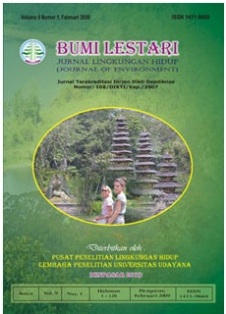PELUANG ADOPSI SISTEM AGROFORESTRY DAN KONTRIBUSI EKONOMI PADA BERBAGAI POLA TANAM HUTAN RAKYAT DI KABUPATEN CIAMIS
Abstract
Agroforestry system as well as the potential species and the corresponding economic valuesin Ciamis District are very diverse. To encourage farmers adopt agroforestry system, both
economical and environmental advantages have to be promoted. This research was
conducted at April to July 2010 at Ciomas, Kalijaya and Kertaharja villages in the Panjalu,
Banjarsari, and Cimerak sub-Districts respectively. Primary and secondary data were
analyzed by quantitative and qualitative descriptive. The result showed that the higher
topography, the more simple agroforestry system applied. The narrower forest size managed
(strata 3), the higher chance agroforestry system adopted by farmers. Farmers in the high
and low topography (Northern and Southern Ciamis regions) had higher chance to adopt
agroforestry system, while the moderate topography showed lower adoption chance. The
economic contribution of non-forest products (NFPs) influences strongly the farmer decision
to adopt agroforestry system. The highest economic contribution of Paraserienthes
moluccana was 42.71% in Kalijaya, while the highest economic contribution of non-forest
product was 75.00 % in Ciomas.
Downloads
Keywords
Authors who publish with this journal agree to the following terms:
- All articles published by Bumi Lestari Journal of Environment and Environmental Reseach Center Udayana University are made available under an open access license worldwide immediately. This means everyone has free and unlimited access to the full-text of all articles published in Bumi Lestari Journal of Environment, and everyone is free to re-use the published material given proper accreditation/citation of the original publication. Open access publication is supported by authors' institutes or research funding agency by payment of a comparatively article processing charge for accepted articles (See Author Fees). Bumi Lestari Journal of Environment and Environmental Reseach Center Udayana University publish articles under the Creative Commons Attribution License.
- Authors are able to enter into separate, additional contractual arrangements for the non-exclusive distribution of the journal's published version of the work (e.g., post it to an institutional repository or publish it in a book), with an acknowledgement of its initial publication in this journal.
- Authors are permitted and encouraged to post their work online (e.g., in institutional repositories or on their website) prior to and during the submission process, as it can lead to productive exchanges, as well as earlier and greater citation of published work (See The Effect of Open Access).





